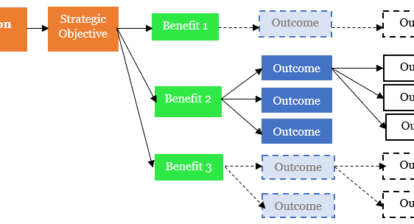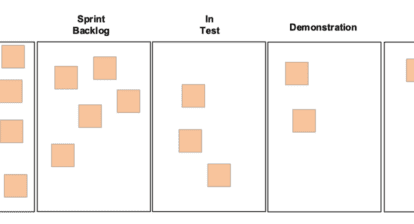
Introduction
Enterprise Project Management (EPM) is an enterprise view of Project Management activities. It is a strategic decision by the organization’s mission, vision, goal, objectives, and strategies in a hierarchical fashion to ensure that the organization allocates its resources to the right projects at the right time. (Ireland, L., 2004, Enterprise Project Management, p. 1)
EPM reflects a distinctive way of thinking about how your organization manages its projects. Where traditional project management focuses on how to manage one project, and program management focuses on multiple related projects, EPM focuses on all projects in general that may have nothing to do with each other, at least as far as their goals are concerned.
EPM refers to the practice of managing projects on a company-wide scale by implementing strategies and practices to streamline and improve the effectiveness (e.g., forecasting, and financial planning) of project management. According to PMI, these initiatives include using software (e.g., MS Project Server or MS Project Online) to consolidate multiple projects, creating a project management department (e.g., PMO or EPMO), and making projects more visible and trackable across the organization. EMP also includes using “stages of growth” models to improve project management capabilities. Remember, there is no one-size-fits-all approach to EPM since it depends on your company’s processes and strategic goals.
EPM is not project management on a larger scale or a roll-up of resources across all your projects, and you are not selecting work breakdown structures (WBS) and dependency networks to a higher-level detail. When you do not have EPM, there is often a lack of alignment among projects within an organization. This divide can result in duplication, wasted effort, missed opportunities, inconsistent decision-making, and other hurdles. EPM can identify when projects conflict or have duplicate efforts and can recognize under-resourced projects that might present opportunities for the organization.
Implementation
Senior management must determine whether there are enough benefits for moving to an enterprise-level organization. To begin this decision process, they would have to analyze existing projects to determine if the right projects were selected, and whether the project slate is less than optimal in terms of size, risk, profitability, and strategic fit compared to their organizational goals. If the decision is made to switch to an enterprise focus, they must define a transitional strategy to move away from their current method. Also, it is vital that senior management be the leader in going through this transition, and to make sure the core business stakeholders understand the rationale for this change and the related benefits. For example, you can get increased efficiency, reduced costs, better visibility, and better project outcomes, including improved resource utilization, lower risks, and an increase in customer satisfaction. All this can lead to a competitive gain!
There are a variety of EPM software tools available in the marketplace. Most of them share the common goal of helping businesses to streamline their operations and improve project management capabilities like creating custom dashboards, having advanced templates for every team, time tracking, and resource management. Some of the most popular platforms being used today come from Asana for a user-friendly solution, ClickUp for fully remote teams, ProofHub for working across departments, Smartsheet for spreadsheet-based project management, and Teamwork for a complete suite of tools. These EPM software tools have a modest flat fee per month.
Summary
EPM refers to the practice of managing projects on a companywide scale. It involves implementing strategies and processes to streamline and improve the effectiveness of project management on a large scale. The building components that make up EPM are organization support, project management, resource allocation process, and portfolio management. Finally, the elements of EPM include risk management, structured estimating, project reviews, escalating issues, time management, information systems, and training/mentoring. Over time this should improve project success rates by having higher quality projects completed on schedule.
Your thoughts in the comment section below are welcomed.
Related Content
- Enterprise Project Management (EPM) Training
- 8 Important Lessons I Learned During EPM Implementations
- Taking Over an Enterprise Project for a Fellow Project Manager
Elevate your project management skills and propel your career forward with an MPUG Membership. Gain access to 500+ hours of PMI-accredited training, live events, and a vibrant online community. Watch a free lesson and see how MPUG can teach you to Master Projects for Unlimited Growth. JOIN NOW







